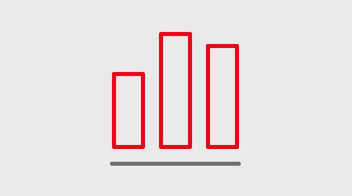Balance sheet
Balance sheet as of Dec 31 / € million | 2023 | 2022 | Change | |
absolute | % | |||
Total assets | 77,472 | 76,303 | +1,169 | +1.5 |
Assets | ||||
Non-current assets | 60,966 | 59,044 | +1,922 | +3.3 |
Current assets | 16,506 | 17,259 | –753 | –4.4 |
Equity and liabilities | ||||
Equity | 12,126 | 14,679 | –2,553 | –17.4 |
Non-current liabilities | 42,369 | 39,145 | +3,224 | +8.2 |
Current liabilities | 22,977 | 22,479 | +498 | +2.2 |
In 2023, there were no material changes to the International Financial Reporting Standards (IFRS) regulations for DB Group’s consolidation and accounting principles that would result in any changes to the consolidated financial statements.
In 2023, as a result of the planned sale of DB Arriva, the corresponding current and non-current assets and liabilities were classified as discontinued operations and shown separately as current held-for-sale assets or as liabilities which are due to mature in the short term relating to held-for-sale assets. The comparability of individual balance sheet items is limited in this regard.
Total assets were slightly higher:
- Non-current assets increased significantly, driven primarily by higher property, plant and equipment (€ +1,769 million). Continuously high net capital expenditures had an effect here. In addition, deferred tax assets (€ +142 million) and long-term derivative financial instruments increased (€ +120 million), mainly as a result of the expansion of hedging transactions for foreign currencies. This was partly offset by the decline in other subsidiaries and securities (€ –72 million) due to valuations and the reclassification of DB Arriva.
- In contrast, current assets fell overall, despite the reclassification of DB Arriva. The main factors were:
- the decline in cash and cash equivalents, mainly due to capital expenditures (€ –2,507 million),
- lower trade receivables (€ –887 million), due in part to freight rate development at DB Schenker, and
- lower other receivables and assets (€ –471 million) for, among other things, debt acknowledgements in connection with vehicle procurement.
- Higher held-for-sale assets (€ +3,154 million) as a result of the reclassification of DB Arriva had a largely compensating effect.
The structure of the assets side remained almost unchanged, with a very slight shift in favor of non-current assets.
On the equity and liabilities side, equity fell, mainly due to:
- the decline in net loss for the year (€ –2,399 million),
- the payment of dividends to the Federal Government (€ –650 million),
- the decline in the changes recorded in the reserves in connection with the revaluation of pensions (€ –450 million), and
- lower changes recorded in the reserves in connection with the market valuation of cash flow hedges (€ –99 million).
- This was partly offset by the equity increase by the Federal Government as part of the Climate Action Program (€ +1,125 million).
The decline in equity led to a lower equity ratio, with a slight increase in total assets.
- Non-current liabilities increased significantly. For the most part, this development was shaped by:
- higher non-current financial debt (€ +2,785 million), and
- an increase in pension obligations (€ +522 million), in particular as a result of a lower interest rate in the revaluation.
- The reclassification of DB Arriva had a partially compensating effect.
- Current liabilities increased slightly. In essence, this development was characterized by:
- higher liabilities held for sale (€ +1,996 million) as a result of the reclassification of DB Arriva, and
- increased other provisions (€ +846 million), mainly due to additions for revenue discounts at DB Regional.
- Lower trade liabilities (€ –1,716 million) at DB Schenker, among others, and
- lower other liabilities becoming due in the short term (€ –465 million) among others in connection with the accounting for acknowledgement of debt partly offset this.
The structure of the equity and liabilities side has shown a shift toward, in particular, an increased share of non-current liabilities, due to the decrease in equity.


